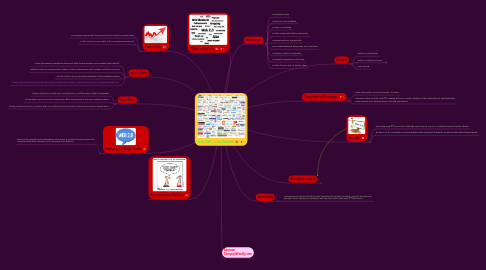Using Web 2.0 for Business
by Alicia Snyman

1. Productivity
1.1. Automation ensures that less time is spent to perform routine tasks
1.2. Costly and error-prone data- entry processes are removed
2. supply Chain
2.1. Allows businesses to exchange documents with trading partners and suppliers electronically
2.2. Effective external communication leads to better relationships with suppliers and faster services
2.3. Can be used to connect growing networks of international suppliers
2.4. Creates online workspaces through document management systems, virtual meeting rooms, brainstorming tools etc.
3. Value Chain
3.1. Allows employees to work more productively in a collaborative virtual environment
3.2. Allows better version control & information flow, accelerating the decision making process
3.3. Allows employees to stay in contact with one another, share information, plan joint projects & discuss ideas.
4. Satisfying Customer Needs
4.1. Improve the usability and sophistication of end-user & customer-facing products by communicating with customers and evaluating their behavior.
5. How not to use Web 2.0
6. What is Web 2.0
7. Advantages
7.1. Productivity Gains
7.2. Improving User Feedback
7.3. Greater Automation
7.4. Greater Networkink within Enterprises
7.5. Improves Delivery Functionality
7.6. More sophisticated & Responsive User Interfaces
7.7. Improves Product Functionality
7.8. Increased Competative advantage
7.9. Greater functionality of Supply Chain
8. Delivery
8.1. Delivery Functionality
8.2. Delivery Tracking Services
8.2.1. Gain Customer Confidence
8.3. Time Saving
9. Competative Advantage
9.1. Makes life simpler, easier and quicker for users
9.2. Companies that are fully Web 2.0- enabled will be in a better position to take advantage of new technology opportunities & do business better than the competition
10. Security
10.1. One thing Web 2.0 cannot do is offer the same level of security as traditional server based software
10.2. Be aware of the implications of sharing data inside &outside the firewall, as well as what data is being shared
11. Advertising
11.1. Advertisements can be placed on social networks like Twitter/Facebook. Basically anywhere on the web, where suppliers & customers will see them while using Web 2.0 themselves
12. Managing Security
12.1. What IT managers can do Only block social-networking or web sites after careful review (from Legal and HR) where there is significant corporate risk that can't be mitigated any other way Employ a dynamic, perimeter web security solution that can filter inbound pages for spyware and viruses; provides URL filtering for known inappropriate sites (sexual content, violence, etc.); support outbound data leak prevention by content scanning; and responds instantly to changing threats Work with HR and legal to update employee guidelines to support acceptable Internet use, policies and guidelines Train users on the hazards of indiscriminate use of social-networking and Web sites Protect mobile laptop users. What employees should do When using personal web mail accounts, do not click on links in your email When visiting social networking sites, do not download applications without checking on the vendor Don't download videos without proper security against spyware and viruses Don't post your profile on a public social networking site if it identifies your employer and it can have a negative impact on the company's reputation. Ensure your antispyware and antivirus protection is up to date and that your personal data is protected using a secure online backup system
13. Sources: ComputrWeekly.com


